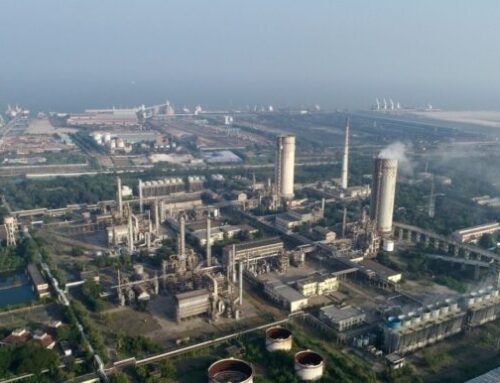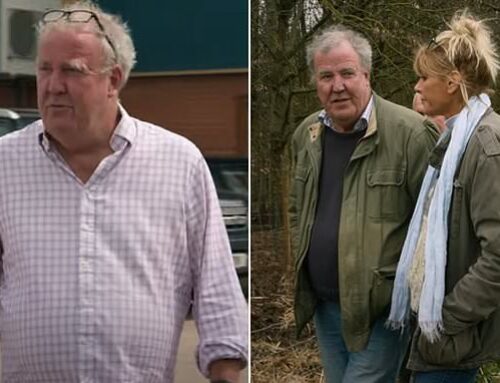Curbing methane to combat climate change
January 2, 2025

The road to methane reduction is long and complex, but the solutions are increasingly within reach. Political will, financial investment and global cooperation are needed to turn those solutions into reality, writes Md Zahurul Al Mamun
WHEN we think of climate change, carbon dioxide (CO₂) often dominates climate discourse, while methane is a powerful, yet often overlooked, greenhouse gas that deserves more attention. Methane (CH₄) is over 80 times more effective at trapping heat in the atmosphere than CO₂ over a 20-year period, making it a key target for short-term climate action to slow global warming. And it is not just industrial giants or deforestation driving this — it is the very food we consume, the waste we discard and the livestock we farm.
However, the narrative surrounding methane reductions, particularly within the global food system, often lacks the complexity needed to generate effective solutions. We need a more radical, data-driven reevaluation of our food systems, one that challenges the assumption that small, incremental changes can make a meaningful dent in methane emissions.
A system at risk
METHANE’S role in the food system is far-reaching. Livestock farming, rice paddies and food waste — the three pillars of our global food system — are driving methane emissions through the roof. According to McKinsey & Company, agriculture accounts for an estimated 45 per cent of total methane emissions. About 80 per cent of agricultural methane emissions are from livestock production, with rice cultivation contributing 10-12 per cent. The UNEP Food Waste Index Report 2021 states that food waste contributes around 8–10 per cent of total GHG emissions.
By 2050, we could avoid around 0.1–0.2°C of warming simply by slashing methane emissions from food systems. While this might sound small, it’s a critical piece of the puzzle. The UNEP report highlights that cutting methane emissions by 45 per cent by 2030 could prevent 0.3°C of warming by 2045 — a key step toward keeping global temperatures under the 1.5°C target set by the Paris Agreement.
This represents a pivotal opportunity to slow down climate change, yet achieving this requires more than merely shifting consumer behaviour. It demands a structural overhaul of food systems, which necessitates confronting the entrenched interests that have benefitted from the status quo.
Cost of our choices
THE common prescription to address methane emissions is to reduce red meat and dairy consumption. It is estimated that a shift to plant-based diets could reduce food-related methane emissions by 20–30 per cent. But here’s where the narrative gets tricky. However, while these figures are enticing, they are misleading unless we fully consider the societal and economic complexities at play.
For some, reducing meat consumption might seem simple—especially in high-income countries, where red meat is often over-consumed. Indeed, a study from the World Resources Institute (WRI) found that implementing a 10 per cent tax on beef could reduce consumption by 5–10 per cent. In fact, in 2023, more than 15 countries introduced policies to curb meat consumption, with several nations exploring economic incentives to promote plant-based foods.
Projected increases in demand for ruminant meat — up to 90 per cent by 2050 — cannot simply be reversed by expecting consumer behaviour to change. Take the 2023 survey by the International Food Information Council — nearly 70 per cent of US consumers expressed a willingness to cut back on meat. But in reality, only 20 per cent followed through. This gap between intention and action underscores the complexity of behaviour change. It’s easy to say, ‘Eat less meat,’ but without systemic changes, it’s unlikely to happen on the scale needed.
But what happens when we apply this logic to lower-income nations, where livestock not only provides nutrition but also economic stability? The smallholder farmer in Bangladesh or the herder in Kenya can’t afford to abandon livestock-based agriculture overnight. For them, meat and dairy are not indulgences; they are lifelines. Are we truly prepared to offer them alternatives that preserve their livelihoods?
Improving production practices
MEANWHILE, technological advancements and policy-driven incentives are likely to reduce methane emissions from food production. The widespread adoption of methane-reducing technologies, such as cattle vaccines and methane inhibitors, is slow, but momentum is building. In high-income nations, precision farming and advanced breeding programs offer the potential to significantly reduce emissions, but developing nations face more significant barriers. Here, international cooperation and funding will be critical to closing the gap.
Optimising agricultural practices to reduce methane emissions is another critical pillar of mitigation strategies. Livestock feed additives, such as red seaweed, have shown promising results in reducing methane emissions from cows by up to 90 per cent in laboratory settings. Yet, the gap between potential and practical implementation is vast. These technologies remain inaccessible or economically unfeasible for farmers, especially in developing countries, where the agricultural sector is already underfunded.
Similarly, rice cultivation, which contributes to around 12 per cent of global methane emissions, can be optimised by employing alternate wetting and drying techniques, reducing methane emissions by up to 48 per cent in some cases. However, scaling this up globally requires investments in infrastructure and training that many countries are not equipped to handle. Without international cooperation and substantial funding, these solutions remain more theory than practice.
The claim that ‘optimising production processes could reduce emissions by up to 50 per cent’ is perhaps overly optimistic without acknowledging the economic and technological constraints. In many cases, production improvements are incremental and significant reductions in methane emissions will require global cooperation, financial support and a just transition for farmers who depend on methane-heavy agricultural practices for their livelihood.
Reducing food waste to save the planet
FOOD waste is another major contributor to methane emissions. According to the UNEP Food Waste Index Report 2021, approximately 30 per cent of all food produced globally is wasted and when this organic matter decays in landfills, it releases vast quantities of methane. In wealthier nations, food waste occurs mostly at the consumer level, driven by over-purchasing, confusion over expiration dates and the pursuit of aesthetic standards in retail. Conversely, in developing nations, food waste happens post-harvest due to inadequate cold storage, poor transportation infrastructure and inefficient supply chains. For example, in sub-Saharan Africa, post-harvest losses account for up to 20 per cent of all food produced.
If we were to halve food waste, we could reduce warming by a substantial margin. Yet, food waste is not just a logistical issue — it is a moral one. With over 800 million people going hungry worldwide, throwing away food isn’t just irresponsible; it is inhumane. The methane released from our waste is a brutal irony in a world where the excess of some condemns the rest to suffer the consequences. Tackling food waste requires localised, context-specific interventions rather than one-size-fits-all global campaigns.
Broader greenhouse gas picture
WHILE methane dominates the food-related emissions landscape, other GHGs, including carbon dioxide (CO₂) and nitrous oxide (N₂O), must also be addressed. Focusing solely on methane would be a mistake. For example, while livestock emits significant methane, agriculture — through activities such as synthetic fertiliser use — contributes around 80 per cent of global N₂O emissions, according to McKinsey & Company. These emissions have nearly tripled since 1980 due to the intensification of agriculture, making N₂O reductions an essential part of a comprehensive mitigation strategy.
Methane, CO₂ and N₂O emissions are intertwined and addressing them together will lead to cumulative effects that help stabilise the climate. While reducing methane is critical, it’s part of a larger puzzle that includes cutting down on CO₂ and N₂O emissions from agricultural systems. Moreover, reducing greenhouse gases must include energy decarbonisation across agricultural sectors. Renewable energy in farming not only slashes CO₂ emissions but also has the potential to curb methane and N₂O. A coherent mitigation strategy for the food system requires both top-down policies, such as the Global Methane Pledge and bottom-up innovations, from technological breakthroughs to grassroots efforts in sustainable farming.
A growing number of experts suggest shifting to Global Warming Potential Star as a metric rather than carbon dioxide equivalent, or CO₂e, for assessing methane’s impact, as it better accounts for the short-term nature of methane relative to CO₂. Incorporating this into global climate targets will ensure a more balanced and effective approach to reducing GHG emissions from food systems.
The road to a sustainable food system isn’t just about eating less meat or throwing away less food — it’s about fundamentally rethinking how we grow, process and distribute food in a way that considers the broader emissions picture.
The crossroads
IT IS not just about what we can do — it is about what we must do. We are at a tipping point. The Global Methane Pledge, launched at COP26 in Glasgow, offers hope, with over 158 countries (Bangladesh is a signatory) committing to cut methane emissions by 30 per cent by 2030. But pledges alone won’t solve this. Real action — on both the national and corporate levels — is required.
To make informed decisions at the national level, Bangladesh needs to establish data collection and inventory management systems for accurate insights. Additionally, the government must introduce the right policies in the right places to promote methane reduction, including carbon pricing strategies, subsidies for methane-reducing technologies and support for plant-based alternatives.
For example, in New Zealand, the government has introduced a methane-reduction plan targeting emissions from agriculture while protecting farmers’ livelihoods. This plan includes reducing biogenic methane emissions by 10 per cent on 2017 levels by 2030 and by 24–47 per cent by 2050. This approach offers a potential model for other nations.
Meanwhile, corporate initiatives are emerging. Companies like Nestlé and Unilever have committed to reducing methane emissions in their supply chains by promoting sustainable agricultural practices. These efforts are crucial as they demonstrate the role of the private sector in addressing climate change.
The road to methane reduction is long and complex, but the solutions are increasingly within reach. Political will, financial investment and global cooperation are needed to turn those solutions into reality.
The moral imperative
YET, the challenge remains monumental. We are not only up against emissions—we are up against ourselves: our habits, our cultures, our economies. Methane emissions aren’t just an abstract scientific concept — they are an expression of our relationship with the Earth, with each other and with future generations. The opportunity to cut methane is perhaps the most promising lever we have to slow near-term warming and prevent the worst impacts of climate change. But here’s the uncomfortable truth: if we don’t rethink how we produce and consume food, the future will force us to reckon with the consequences in far more brutal ways.
Are we ready to act?
Md Zahurul Al Mamun is a climate change researcher and analyst.
Search
RECENT PRESS RELEASES
Related Post




